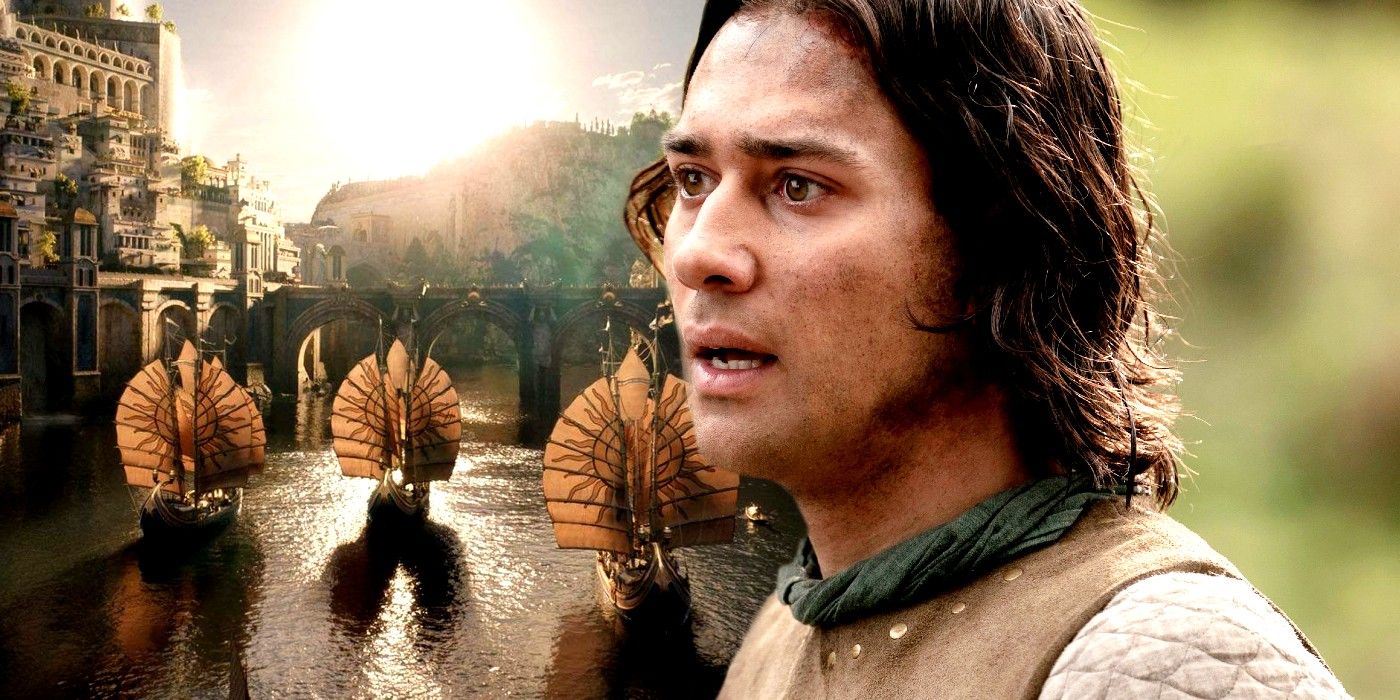
Viewers who are only familiar with Peter Jackson’s film trilogy may recognize the name of Númenor, but the location itself will have come as something of a surprise. One of the greatest civilizations in the history of Middle-earth, it was settled by the Edain – Middle-earth’s first humans, who sided with the Valar in the battle against Morgoth, the first Dark Lord. The Valar raised the island from the depths as a reward for the Edain’s loyalty, and the Númenoreans were originally ruled by Elrond’s brother, Elros. But already, there have been hints of Númenor’s fate.
When The Fall Of Númenor Happens
Númenor Falls At The End Of The Second Age, Around When Sauron Is Defeated
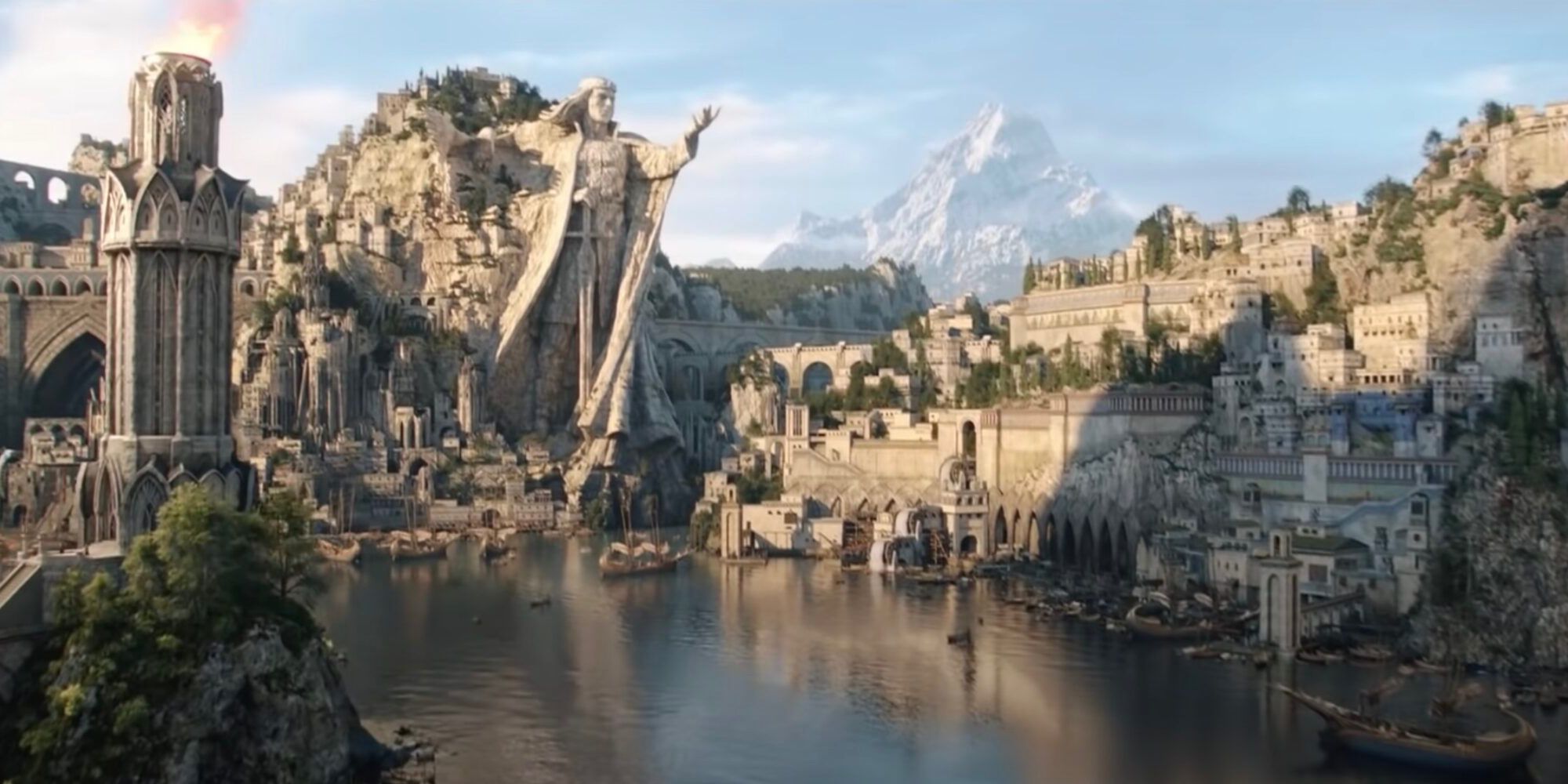
The Fall of Númenor is one of the most important events in the history of Middle-earth, a cataclysm that marks the end of the Second Age. It’s difficult to place it in relation to the current events of The Lord of the Rings: The Rings of Power simply because the timeline has clearly been adjusted. Showrunner Patrick McKay recently addressed this, explaining the Tolkien estate was concerned with “the principle of the narrative flow and the sequence of events, not the dates.” (via New York Times)
The Rings of Power‘s timeline is compressed, meaning everything is happening much faster than J.R.R. Tolkien intended. Nonetheless, according to McKay, the flow of events will be the same: “The rings are made here, there’s a war between Sauron and the elves after that, later Sauron is taken to Númenor, Númenor falls, Gondor is established… Does it matter if a hundred or 500 years passed between those events? No.”
The Lord of the Rings is supposed to take place over 3,000 years after the Fall of Númenor, and it runs until the end of Middle-earth’s Third Age. Again, it is difficult to say whether the timeline is imagined as matching up with J.R.R. Tolkien’s intentions. Events may continue to flow at an accelerated rate in Amazon’s Lord of the Rings timeline, meaning there could well be less of a dramatic gap between The Lord of the Rings: The Rings of Power and the War of the Rings seen in Peter Jackson’s movies.
How & Why Pharazôn Causes The Fall Of Númenor
Pharazôn Is Tricked By Sauron Into Sailing Against Valinor
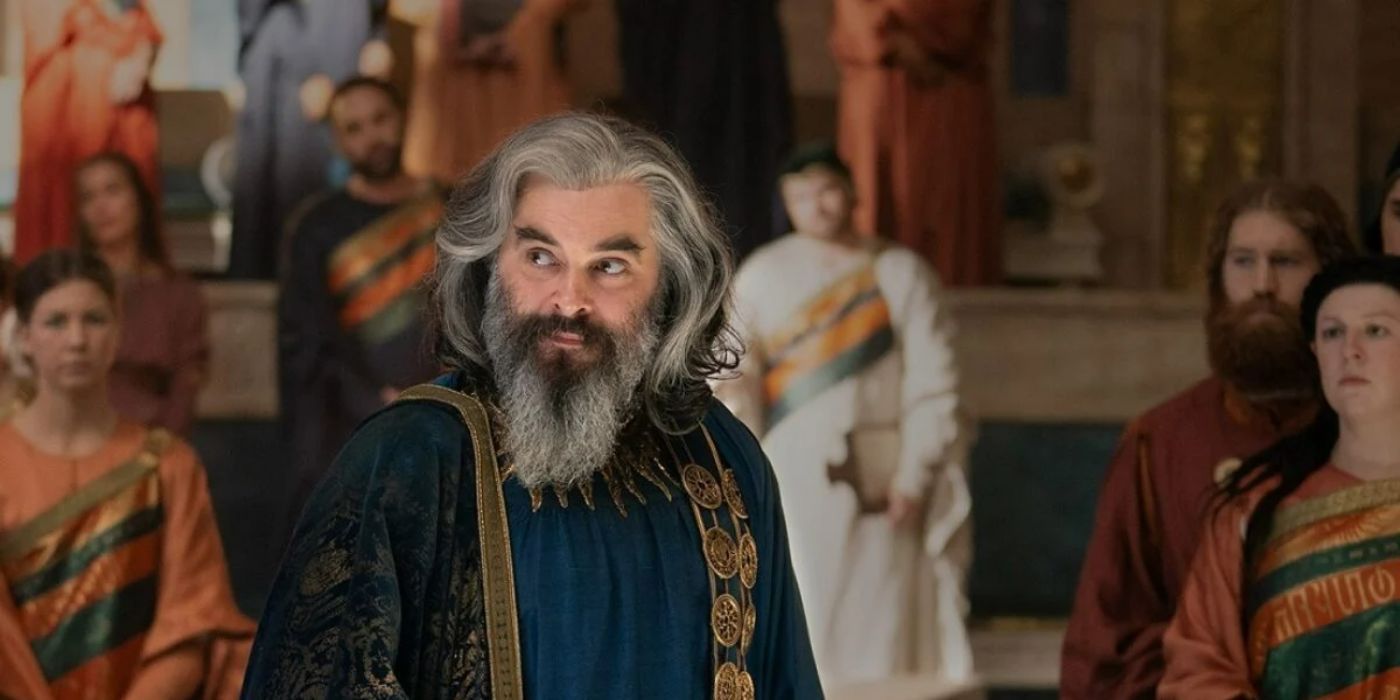
Ar-Pharazôn, an elder statesman on Númenor, is destined to bring about the Fall of Númenor. In Tolkien lore, he was a man who burned with a hunger for wealth and glory, and he became a skilled and capable war leader. Ar-Pharazôn maneuvered his way into position as ruler of Númenor, and under his reign, Númenor became increasingly hostile to elves and the Faithful who remained loyal to them. He resolved to challenge Sauron and his armies for the lordship of Middle-earth but was tricked when Sauron played into his ego and pretended to be cowed by Ar-Pharazôn’s might.
According to Tolkien, Ar-Pharazôn became obsessed with the idea of immortality. Sauron persuaded him that this could be gained through the worship of Morgoth, leading to the construction of a temple dedicated to the first Dark Lord and the destruction of the White Tree of Númenor. None of Ar-Pharazôn’s sacrifices earned him immortality, of course, and ultimately Sauron tricked him into leading a fleet to the west in an attempt to invade the eternal lands of Valinor. Such an act was strictly forbidden by the Valar, and they responded by destroying Ar-Pharazôn’s fleet and drowning the entire island of Númenor.
It’s unclear how closely The Lord of the Rings: The Rings of Power will align with the events described in Tolkien’s notes. It’s important to note that McKay’s comments suggest the Tolkien estate wants the core of the story preserved for Sauron to be apparently defeated and taken to Númenor and for Númenor to fall as a result. It seems likely the main story will match up closely, although Tolkien’s outline leaves a lot of room for creativity when it comes to the details.
How The Rings Of Power Is Setting About The Fall Of Númenor
Rings Of Power Season 1 Set Up A Power Struggle In Númenor
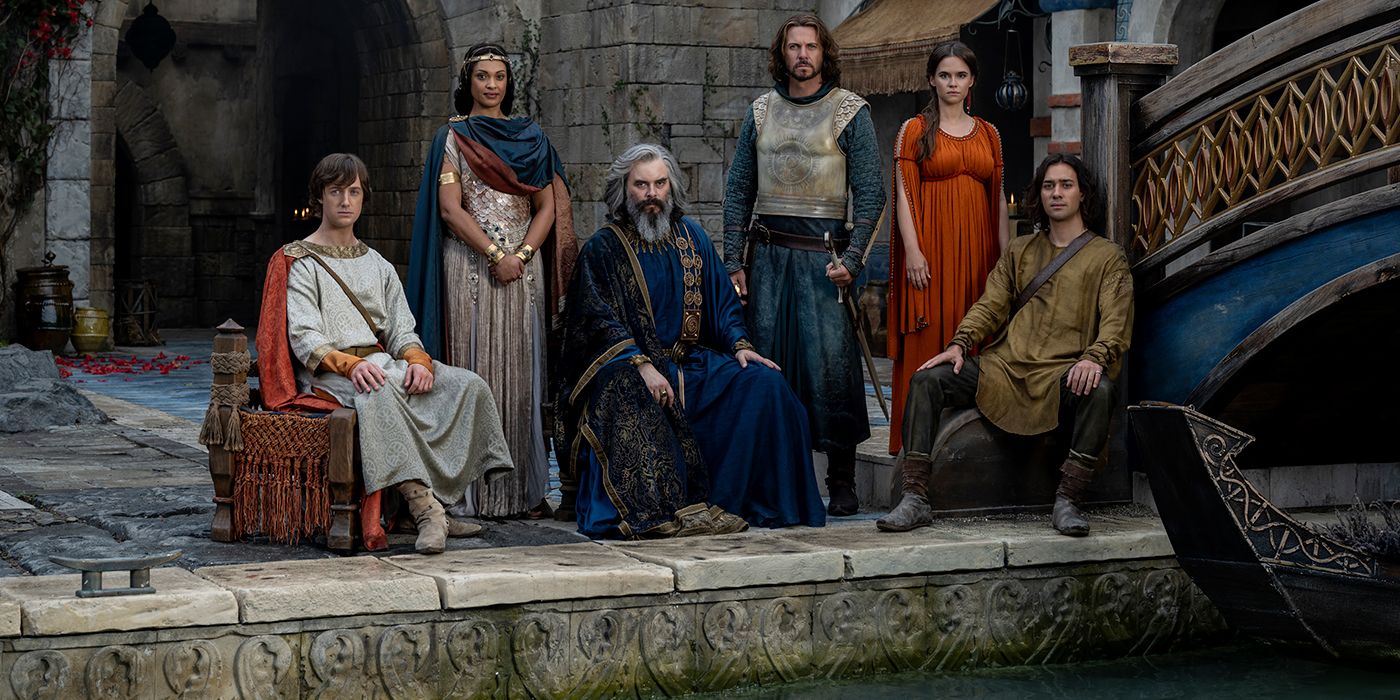
The Rings of Power’s season 1 ending sets Númenor up for its eventual downfall through a political power struggle. The old king, Tar-Palantir, spent much of the season bedridden and following his death, Pharazôn intends to enact control over the city. He’s already made a speech about life and death, alluding to his future interest in immortality, which will likely lead to his dealings with Sauron. In the form of Halbrand, Sauron visits the city in season 1, foreshadowing what’s to come.
Míriel and Elendil are the heroes in Rings of Power’s Númenor plotline, but Míriel is weakened now that she’s attempting to hide blindness from the public. Pharazôn will likely catch on to this in time and use this to his advantage to sway the public opinion in his favor. Elendil wants the city to return to its old ways, with friendship with the elves, while Pharazôn will eventually try to lead them in a different direction, hoping to make man the great power on Arda. These philosophical differences will continue to divide the city, eventually leading to its ruin.
What Happens To The Númenorians After The Fall
The Legacy And Impact Of Númenor Lives On To Defeat Sauron
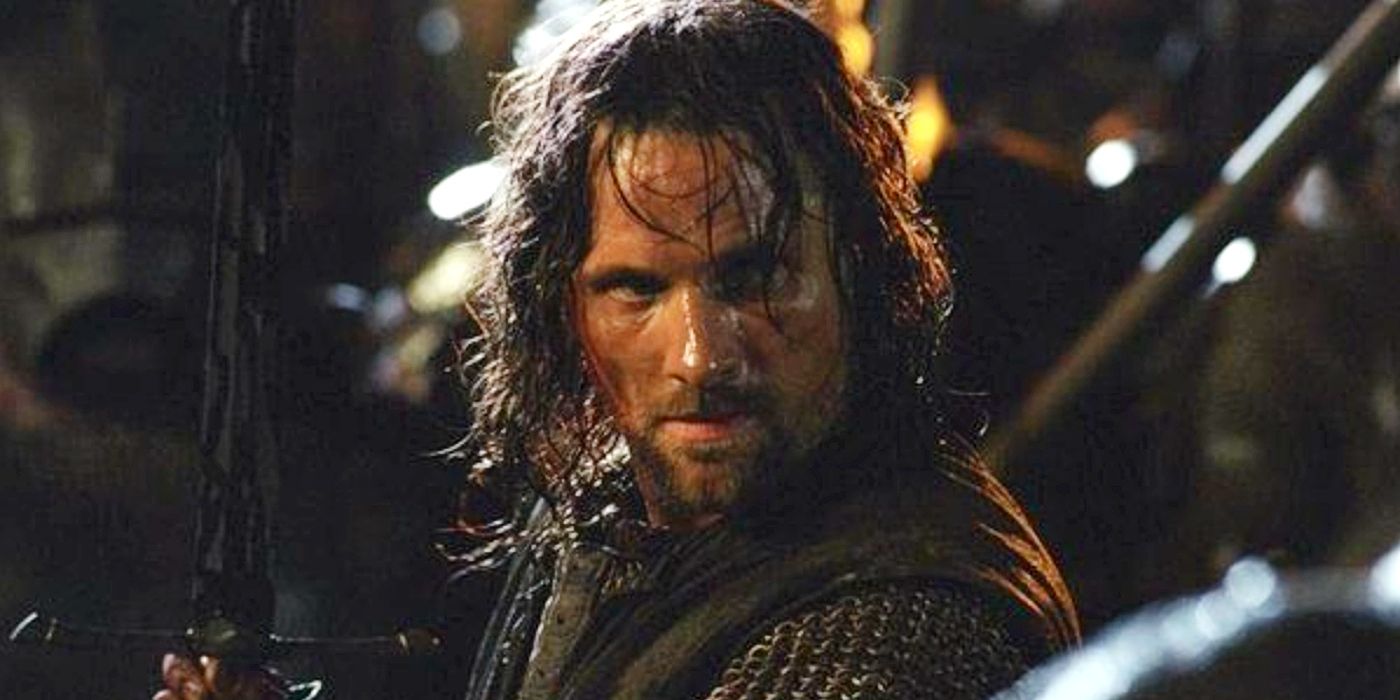
The great island of Númenor is destined to die, but it will have a legacy. Survivors of Númenor will be scattered across Middle-earth, their bloodlines mixing with those of the humans who remained there. They will establish important kingdoms of the Third Age, such as Gondor, explaining why Gondor’s Minas Tirith looks similar to Númenor. Indeed, this has already been effectively foreshadowed in The Lord of the Rings: The Rings of Power season 1, with discussion of Númenorean riders bonding with their steeds in a manner reminiscent of the famed riders of Gondor.
Númenor may be ill-fated, then, but this kingdom will have a legacy that outlives Sauron itself – for without Aragorn, it is difficult to imagine a scenario where Sauron was defeated at last. The light of Númenor will continue to shine out across Middle-earth, even when the island itself has been swallowed up by the seas. This is one of the most poignant and poetic ideas in J.R.R. Tolkien’s writings, and it’s thrilling to see it brought to life in The Lord of the Rings: The Rings of Power.


